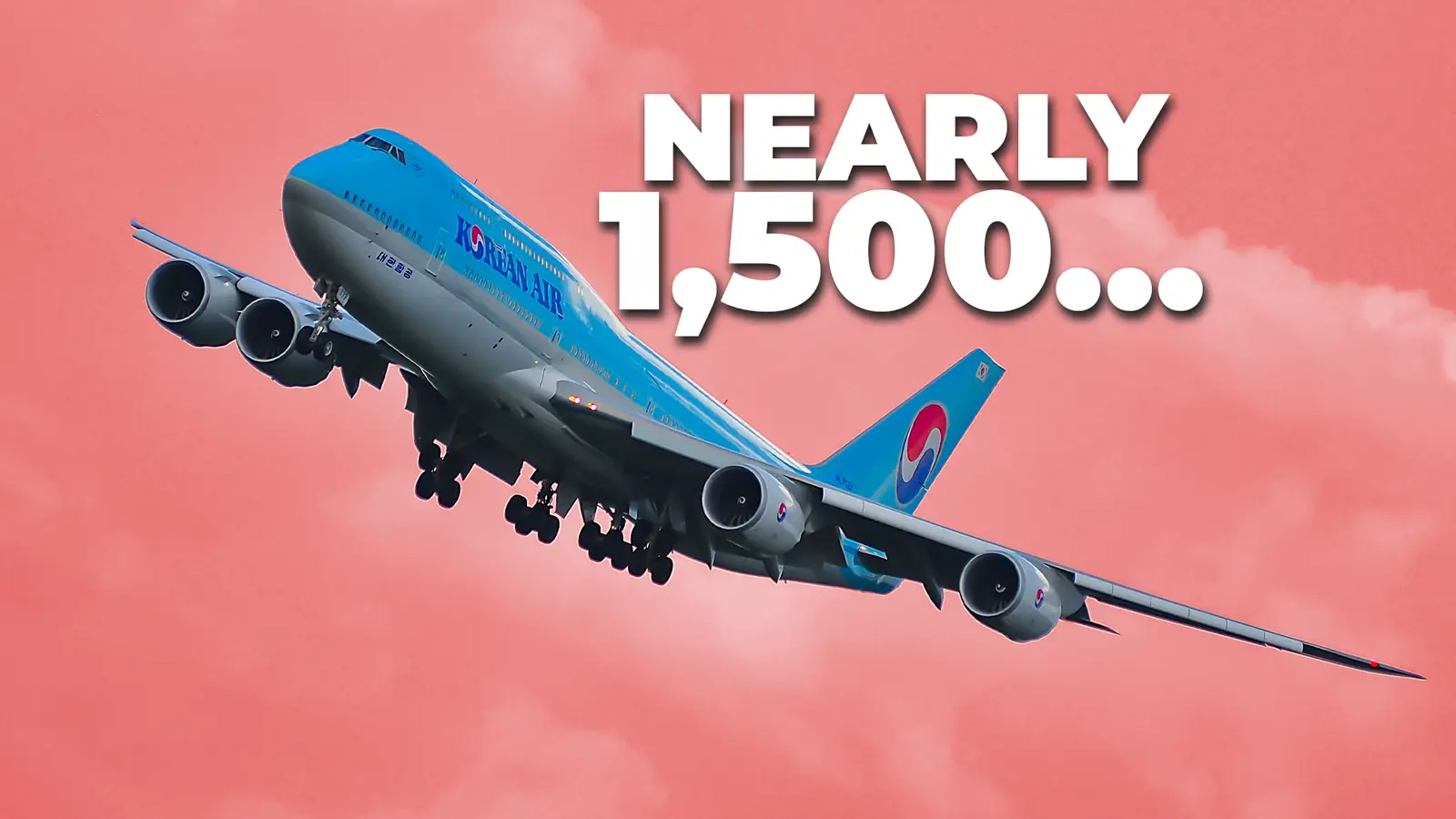
The Boeing 747 is one of the most iconic planes out there, and was the largest passenger aircraft in the world for a long time, until the Airbus A380 took the title. Its large size and passenger carrying capacity made the 747 profitable for airlines, flying the most dense hub-to-hub routes. After being introduced in January 1970, with Pan American World Airways as its launch customer, the 747 would go on to be manufactured until as recently as 2023, with a total of 1,574 examples produced.
Only a tiny portion of 747s ever built are still in service, and passengers wishing to enjoy a flight on the world’s first partial double-decker jetliner have only a few options remaining before the 747 is gone from commercial passenger use forever. This article intends to investigate how many 747 flights are being made today, and with which airlines and on which routes the 747 is flying.
Airlines That Operate Passenger 747 Flights
As previously mentioned by Simple Flying, there were four passenger airlines operating scheduled Boeing 747 passenger flights in the world. Between these airlines, only 44 Boeing 747s remained in service, including parked aircraft. All aircraft in question were either the newest 747-8 variant, introduced in 2011, or the previous 747-400 variant, introduced in 1989. The airlines and the number of 747s owned are shown below:
According to Flightradar24, there were a total of 3,269 passenger flights operated by the Boeing 747 in the previous month of May, during the summer holiday travel peak in Europe. Nigeria’s regional airline, Max Air, was also included among the above airlines, as an operator of 747 flights. As of August, Max Air operated three 747-400s, according to Airliner World.
However, the airline was known to have sent two of its three 747-400s for retirement by 2023. Earlier that year, Max Air also came under investigation by the Nigeria Safety Investigation Bureau (NSIB) following a 737-400 tire bursting incident in May, so there may be some uncertainty about the fleet owned by the airline. That said, the following are the number of 747 flights made in the month of May, showing that at least some of Max Air’s 747s are active:
The 747 Flew 1,460 Times In September
The most recent data from Cirium shows a drop-off for 747 flights scheduled in the colder month of September, with 1,460 flights. Notably, Max Air was missing from the list of 747 operators for the month, with 541,567 seats available across all flights. As expected, Lufthansa had the most flights scheduled over the most routes. The flights are broken up by airline and listed below:
Lufthansa is the airline with the most 747s in the world. As of June 2025, the airline operates 27 747 aircraft, including 19 Boeing 747-8s and eight Boeing 747-400s. Frankfurt Airport (FRA) is the main hub of the airline, with many routes originating there. All the 747 routes scheduled for September will depart from and return to this hub. Likewise, Air China’s 747s are based out of Beijing Capital International Airport (PEK), Korean Air’s 747s at Incheon International Airport (ICN), and Rossiya’s (Aeroflot) at Sheremetyevo International Airport (SVO).
As mentioned earlier, Lufthansa and Air China fly both 747-8 and 747-400 variants, while Korean Air only flies 747-8s and Rossiya only flies 747-400s. The Lufthansa route from FRA to JFK is flown by both variants, with 17 return flights scheduled to be flown by the 747-8 and 13 by the 747-400. The Air China PEK to SHA route is also flown by both variants, with 26 return flights scheduled to be flown by the 747-8, and three by the 747-400.
Another Airline That Flies The 747
In the comments made on the Flightradar24 piece with data regarding 747 flights in May, it was pointed out that there is another airline that also flies the 747, but was not included in the overview:
“If you write a piece then do research. Mahan regularly flies with Boeing 747-400 from Tehran to Kish Island and Mashad.”
Later, another user speculated: “This is not a route available to many and maybe why it was omitted.”, and it is interesting that both of these routes are very short, and clearly regional flights. Tehran to Kish Island is just 565.4 nautical miles, and Tehran to Mashad is just 406.8 nautical miles, according to Air Miles Calculator. As it turned out, there was a lot more to the story, as another comment explained:
“According to the British High Court, three 747-400s were unlawfully taken by Mahan Air from their real owner, Blue Sky Airlines, in 2008, using forged bills of sale. When ordered to bring the aircraft back to Europe, Mahan claimed it could not do so because it was being investigated by the Iranian authorities for fraud, and the aircraft had to be kept in Iran.”
Investigating Mahan Air, there is some controversy around the privately owned Iranian airline, largely for cooperating with governments not aligned with the European Union and US interests. Still, the airline operates to locations in the Far East, Middle East, Central Asia, and Europe. Hilariously, at least two of the 747s listed in its fleet were ordered grounded, with a bill of sale to be presented by Mahan, according to Casemine, yet the aircraft remained in use, aside from a brief retirement. This may explain their short, local routes and exemption from the 747s counted around the world.
The 747 Remains A Busy Plane Across Commercial Aviation
While the passenger 747 has been popular in the past, and is a fan favorite among passengers, the 747 has had a great deal of success in the freight industry. The 747-400 is the most produced variant of the Jumbo family, with 694 examples built and around 255 remaining in use today, making it the most common 747 variant around. The majority of these 747-400s are freighters, which include converted passenger 747-400s.
Several 747s also remain in use in the private sector, and the only two 747s in the world that are still yet to be delivered are heavily modified Air Force One 747-8i passenger variants, which are expected to be ready in 2027. These two aircraft were expected to be delivered in 2024, but were pushed back due to various issues, including supply chain problems, wiring design errors, workforce shortages, and a dispute with an interior contractor, according to Business Insider.
The 747 boasts great cargo-carrying abilities thanks to its generously spacious interior and powerful lifting capacity. The 747’s largest downside is its low fuel efficiency, thanks to its heavy weight and four engines. While the 747-8 saw some improvements, thanks to being equipped with modern turbofan engines, the variant is still handily outperformed in the area of fuel efficiency by the smaller twin-jets of today, and while they may be better for the long-haul passenger market, this is less of a factor for freight and private markets.



